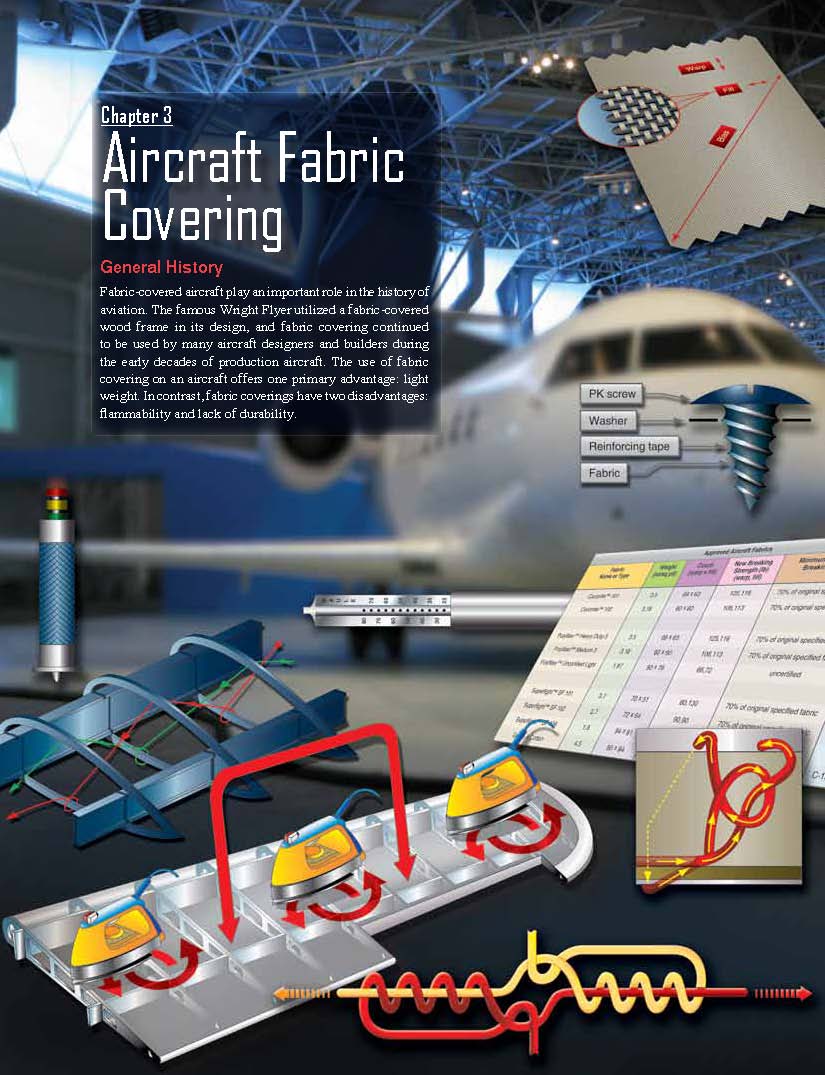I get these question a lot:
Can I mix products from different companies?Can I use automotive paint on my fabric.
Why does it cost so much?
By the way, Consolidated Aircraft Coatings produces the Poly-Fiber process, they also own Randolph and Ceconite. The other certified processes on the market are Air-Tech Coatings, Superflite and Stewart Systems..
Here is what Ron Alexander from Aircraft Spruce has to say:
"Covering a production airplane that you are restoring imposes a restriction requiring you to apply a fabric covering process that meets or exceeds the specifications of the original fabric process that was installed by the airplane manufacturer. To do this you must use a covering system that has been issued a Supplemental Type Certificate (STC) by the FAA. In addition, the materials that comprise this STC must be manufactured according to a Parts Manufacturing Authorization (PMA) also issued by the FAA. Your particular type of airplane must be listed under the STC of the respective fabric process for you to use it as a replacement for the original fabric. Each company manufacturing covering materials maintains a listing of all aircraft that are approved to use their respective system.
Each approved fabric process must have a manual outlining how to apply the fabric and coatings. This manual is an integral part of the STC and must be adhered to during the covering procedure. To use different fabrics or chemicals that are not part of the process voids the STC. What does this mean? If you are going to mix one type of fabric with another type of fabric tape that is not part of the manufacturer's STC your airplane is not considered airworthy and therefore is not legal to fly. If you mix and match the chemicals from different processes the same restriction applies. The best advice is to choose a covering system and follow their manual explicitly. They have tested their products for years and know what works and what will cause problems."
Since 2003, the FAA has required that fabric-covered aircraft (at least the fabric parts) be painted only with top coat paints tested and approved on an STC. Use of any other topcoat paint will void the STC and airworthiness of the aircraft. Up to 2003, the STC’s “ended with the silver,” and any type of paint was legal to use. This is no longer true. Over the years, increased use of brittle automotive or industrial paints caused enough cracking and delamination to cause the FAA to rethink approving untested topcoat paints over fabric. Failed topcoat paints expose polyester fabric to sunlight and UV damage. You could use enamel or anything else over the struts, cowl, fairings, etc. The keyword is FABRIC.
Experimental aircraft are not bound by these rules; however, we do recommend using products with known track records on fabric components.
Experimental aircraft are not bound by these rules; however, we do recommend using products with known track records on fabric components.
Fabric: The Recovering Process
In answer as why it costs so much:
There are a number of factors, one is the certification process and keeping the PMA approvals up to date as the EPA changes regulations. In 1999 most all paint manufactures were required to change drastically for EPA compliance. That is why some companies had to change their color charts and why if you give them a name or paint number that was used before 1999 they can not find it.
As for the total cost to have an aircraft recovered the main cost is labor. Air-Tech and Superflite materials are more expensive than Poly-Fiber and Randolph dope but Poly-Fiber and Randolph dope is more labor intensive during the finishing process. The average light plane, Piper J-3, Taylorcraft BC-12D, Aeronca 7AC are all the same when it comes to the amount of time to cover. For Air-Tech and Superflite I can normally do a complete aircraft in 450 hours. That is with minor aircraft cleanup not including any major repairs. Using Poly-Fiber with Polytone or Randolph Dope you can add an additional 75 hours. So, even though the materials are more expensive, the labor is less on the Air-Tech and Superflite processes. The additional labor makes up the difference in the low cost of materials. In the final analysis the cost is virtually the same if you factor in labor. If you do it yourself and you like wet sanding and more wet sanding and even more wet sanding Poly-Fiber with Polytone or Randolph Dope is the least expensive. Most Restorations take from 650 hours and up depending on the complexity of the aircraft.
Note that I did not include Poly-Fiber Aerothane or Randolph Ranthane top coats in the equation. There is a lot more cost in the application of Urethanes than buying the materials. Urethanes are a known carcinogen. You MUST use an external source for breathing air. Body protection also must be used with Tyveck protective suits, head covering and gloves. I have lost several friends who tried spraying airplanes without the above. One went into the hospital the next week after spraying his Pitts S1 and died from suffocation and toxic poisoning shortly thereafter. The other had a similar experience but lived. However he is now on oxygen and will be for the rest of his shorten life.
I started painting at 12 in 1968. In those days we didn't have MSD sheets nor OSHA or EPA to tell us we were slowly killing ourselves. Today, I have a proliferal neuropathy that was caused by spraying enamels thinned with Toluene, Toluol, Zylene and MEK. Please use protection when your using any material these days. Your will thank yourself tomorrow!
Here is a great read on fabric, how its made, how to install it and a lot of good tips.
Down Load it Here
AMA_CH3.pdf

Copyright © 2023 by King Aero, Inc.- All Right reserved - Email: mking@kingaeroaviation.com



